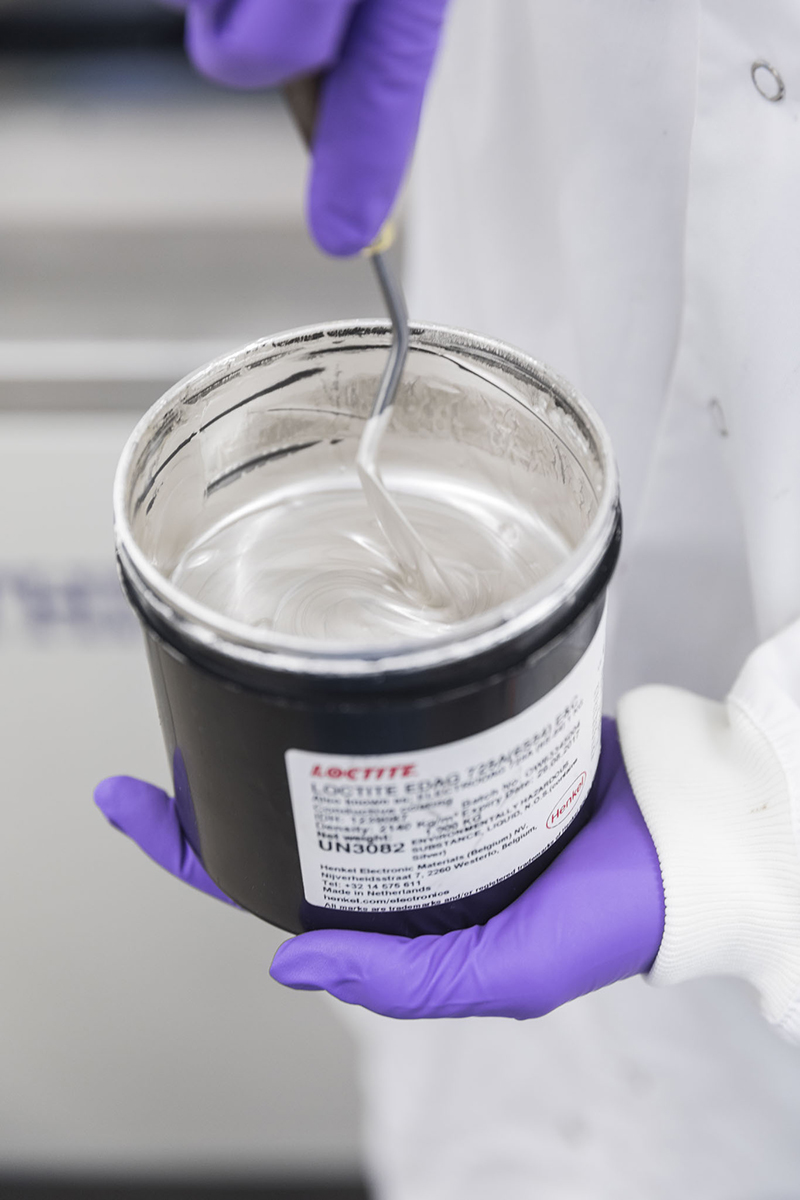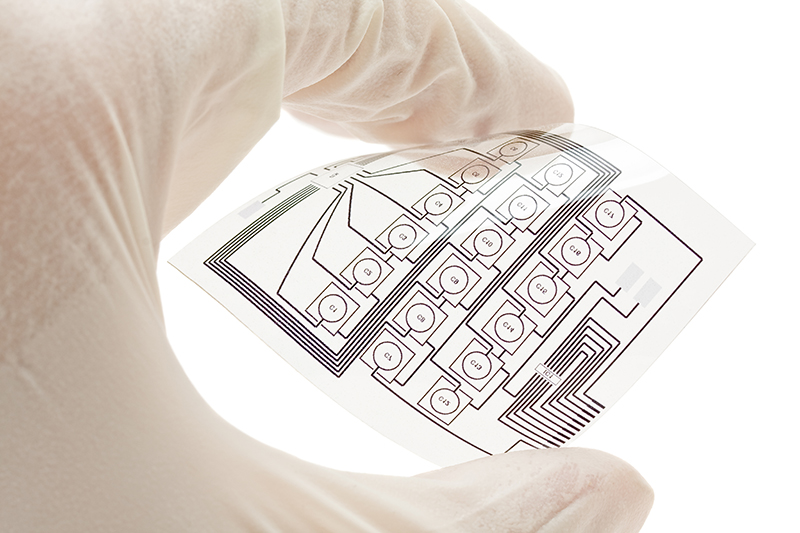Printed electronics are flexible and thin electronic components which are made during the process of printing specialised and functional ink formulations onto a variety of substrates. One of the most efficient production methods, printed electronics allow for high-volume, high-throughput and cost-effective manufacturing.
In recent years, the printed electronics market has seen a surge in popularity as manufacturers opt to create new and innovative solutions for everyday applications. Paired with the growing penetration of emerging technologies such as 5G and digital healthcare, this new era of technology is driving users to adapt their production process accordingly. In particular, the demand for wearable and thinner electronic devices has heightened, and printed electronics are now being used to form items such as touchscreens, mobile phone antennas and electronic skin patches.
Ellsworth Adhesives is delighted to be working in collaboration with our vendor Henkel, an industry-leading supplier of printed electronic materials and services, to introduce our customer base to these high-quality materials.
Benefits of Printed Electronics:
Printed electronics bring with them a whole host of advantages, with countless everyday devices now relying on these technologies for function, form, and flexibility.
Traditional electronic components are commonly thick and rigid; however, manufacturers are increasingly opting for thinner substrates which are more complex in functionality. Printed electronics are a perfect choice for these applications as they allow the production of flexible and lightweight electronic components which are much more adaptable. The specially formulated inks can address the complex demands of fine line printing whilst still maintaining a high level of functionality and robust conductivity. By implementing these high-quality inks, manufacturers can produce products which are smaller, lighter, and more technologically advanced.
One highly appealing factor of printed electronics is the ability to produce them in bulk at high-speed, therefore reducing production costs and time. Despite this fast turnaround, the functional inks still ensure a highly polished and aesthetically pleasing final product during mass production. They are extremely easy to integrate into existing manufacturing processes as the require fewer input materials and can be used on a wide variety of substrates.
Additionally, there are a diverse range of functional inks and coatings available to suit different application requirements. The LOCTITE® inks portfolio consists of a variety of different conductive, resistive, dielectric, electrode, positive temperature coefficient (PTC) and shielding inks. With something to suit all printed electronic requirements, Henkel have been creating innovative technologies for well over three decades. Learn more about Henkel’s extensive ink range in their dedicated brochure.
Printed Electronics Applications:
Printed electronic materials are being used to create smart solutions across multiple markets including consumer, automotive and medical. They are used for the manufacturing of membrane switches, flexible circuits, heating sensors, EMI shielding and many more applications.
The functional inks used in printed electronic applications transform a substrate into a conductive surface, opening them up to a wide variety of new application fields. This includes traditional industries which had no prior connection to electronics such as textiles and furniture.
A key example of printed electronics applications is the creation of smart surface technologies. Display technologies used in our everyday life rely on many different printed solutions for functionality and form. Henkel has developed materials specifically for these applications which ensure the devices function correctly under diverse conditions. Their inks, in combination with protective top layers, are delivering outstanding results for industrial touch screens, membrane touch switches, automotive touch screens, keyless entry devices and printed LED lighting.


